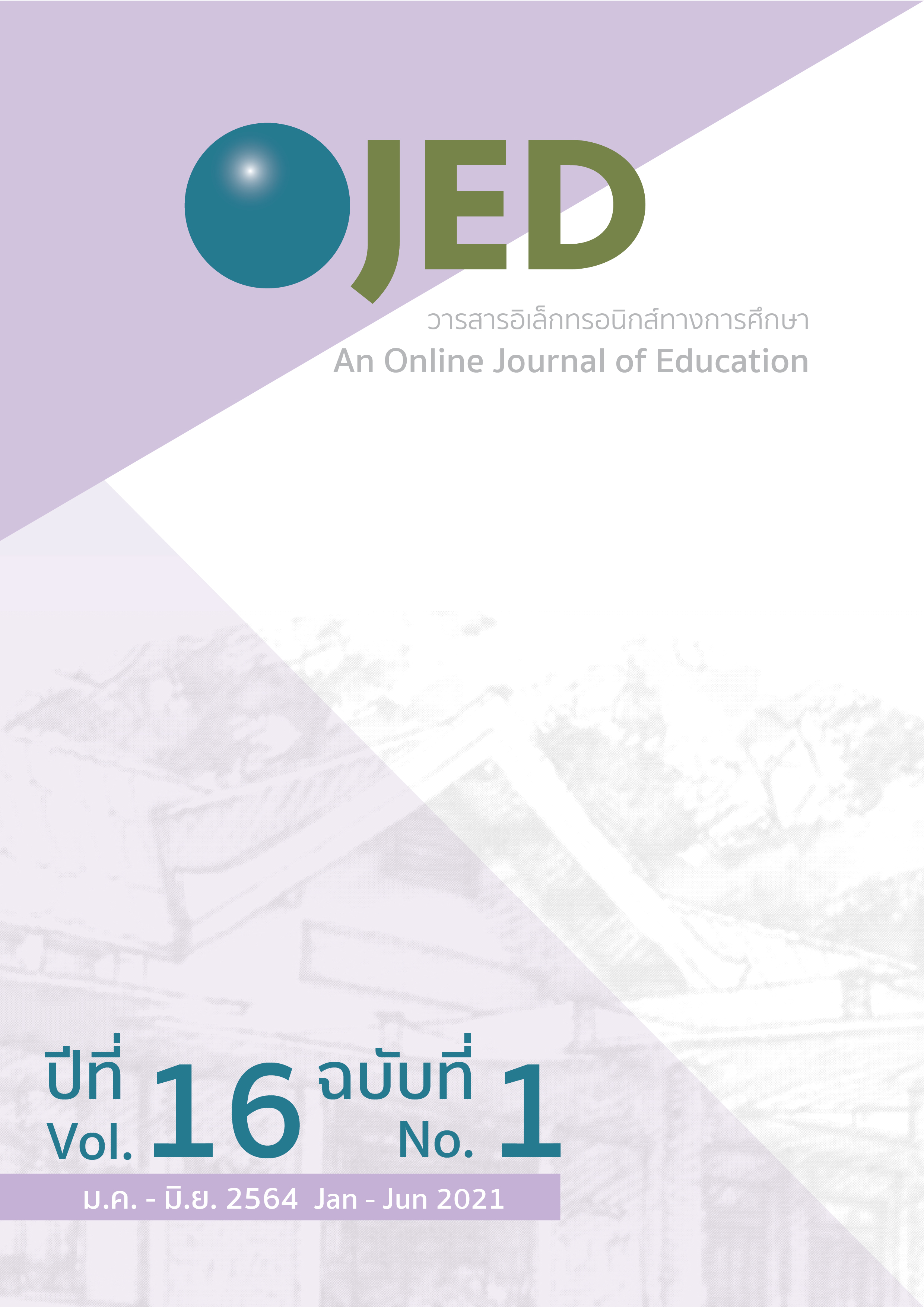Strategies for Instructional Supervision in Secondary Schools under the Office of the Secondary of the Secondary Educational Service Area 7
DOI:
https://doi.org/10.14456/ojed.2021.11Keywords:
instructional supervision, strategies for instructional supervisionAbstract
The research had two objectives: 1) to study the current and desirable conditions of instructional supervision in secondary schools under the Secondary Educational Service Area Office 7, and 2) to propose strategies for instructional supervision in secondary schools under the Office of the Secondary Educational Service Area 7. The population was 44 secondary schools under the Secondary Educational Service Area Office 7. There were 264 respondents which included the deputy directors of academic affairs and the head teachers of five learning subject groups from each school. The data analysis included frequency, percentage, mean, and standard deviation calculations as well as Priority Needs Index (PNI) Modified and content analysis. The results showed that the overall current conditions of instructional supervision were at a high level (M = 3.95). The overall desirable supervisory conditions were at the highest level (M = 4.50). The PNI of overall instructional supervision was 0.139. Strategies for instructional supervision consisted of three main strategies, six sub-strategies, and 12 methods of implementation. Strategy one is to build an understanding of the supervision principles. Strategy two is to promote a systematic operation of instructional supervision. Strategy three is to include the instructional supervision programs in the schools’ annual action plan.
References
ภาษาไทย
พฤทธิ์ ศิริบรรณพิทักษ์. (2552). การบริหารและการจัดการศึกษาเพื่อโลกใบเล็ก. แนวคิดและหลักการจัดทำแผนกลยุทธ์ (strategic planning). พริกหวานกราฟฟิค.
วัชรา เล่าเรียนดี. (2556). ศาสตร์การนิเทศการสอนและการโค้ช การพัฒนาวิชาชีพ: ทฤษฎีกลยุทธ์ สู่การปฏิบัติ (พิมพ์ครั้งที่ 12). ภาควิชาหลักสูตรและวิธีสอน คณะศึกษาศาสตร์ มหาวิทยาลัยศิลปากรวิทยาเขตสนามจันทร์.
สถาบันทดสอบทางการศึกษาแห่งชาติ. (2561). รายงานประจำปี พ.ศ.2561. https://www.niets.or.th/uploads/content_pdf/pdf_1571281594.pdf
สำนักงานเขตพื้นที่การศึกษามัธยมศึกษา เขต 7. (2561) การพัฒนายกระดับคุณภาพการศึกษา ปีการศึกษา 2561 ด้วยการทดสอบการศึกษา ระดับชาติขั้นพื้นฐาน (Ordinary National Educational Test (O-NET)) กับบุคลากรในโรงเรียนสังกัดสำนักงานเขตพื้นที่การศึกษามัธยมศึกษา เขต 7. http://www.nitednayok.com/data/data%20O-NET%20Report%202561.pdf
ภาษาอังกฤษ
Acheson, K. A. & Gall, M. D. (2003). Clinical supervision and teacher development preservice and inservice applications. John Wiley & Sons.
Adam, H. P. & Dickey. F. G. (1986). Basic principles of supervision. American Book. Franseth, J. (1992). Supervision as Leadership. Peterson Co, Ltd.
Glickman,C ., Gordon,S .,& Ross-Gordon,J . (2017). Supervision and instructional leadership a developmental approach. (10th ed.). Pearson.
Zepeda, S. J. (2017). Instructional supervision applying Tools and Concepts. (4th ed.) Routledge.
Sullivan, S., & Glanz, J. (2013). Supervision that improves teaching and learning. (4th ed.) Corwin.
Weihrich, H. (1982). The TOWS Matrix: A tool for situational analysis. Long Range Planning, 15(2), 54-66. https://doi.org/10.1016/0024-6301(82)90120-0
Downloads
Published
How to Cite
Issue
Section
License
Copyright (c) 2021 An Online Journal of Education

This work is licensed under a Creative Commons Attribution-NonCommercial-NoDerivatives 4.0 International License.




